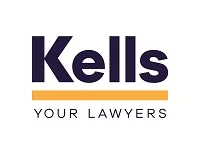Effective from 25 March 2020, the Australian Government has implemented economic measures to provide relief for financially distressed individuals and businesses affected by COVID-19.
These measures, discussed in our previous article, will be in place for the next 6 months. Among others, these measures include:
- increasing the current minimum threshold for statutory demands from $2,000 to $20,000
- increasing the statutory timeframe for a company to respond to a statutory demand from 21 days to 6 months
- increasing the minimum amount of debt required to initiate bankruptcy proceedings against a debtor from $5,000 to $20,000
- increasing the timeframe a debtor has to respond to a bankruptcy notice from 21 days to 6 months.
Nonetheless, the Australian Government has made it clear that these measures are not intended to be a freeze on debt recovery processes all together, noting:
Businesses should be aware that while the relatively low cost and effective option of a statutory demand may not be as readily available, that there remain other avenues when seeking to enforce an outstanding debt.
Through the Courts
Creditors are still able to enforce their debts through the Courts and other that the above restrictions, there are currently no general COVID-19 restrictions on commencing legal action.
The Small Claims Division of the Local Court has jurisdiction to hear debt recovery claims up to $20,000. This provides a relatively efficient and lower cost option for debt recovery.
Claims of up to $100,000 are heard in the General Division of the Local Court.
For more significant claims, the District Court generally has jurisdiction for debt recovery claims under $750,000, with claims above this heard in the Supreme Court of NSW.
Once the originating process (usually called a Statement of Claim) is filed and served, the debtor will have 28 days to respond to the claim by filing a defence. If they fail to do so within this timeframe, the creditor may then apply for default judgment.
The entry of a default judgment can have significant impact on a debtor's credit history and ability to obtain finance, so that in itself can be an effective tool where the debtor has some capacity to make payment, with a payment plan able to be negotiated.
After a judgment is obtained, a creditor may be able to enforce the judgment in a number of ways including:
- garnishee order – an order on the debtor's bank or other party that would otherwise be making payment to the debtor to instead pay the money to the creditor in payment of the debt
- writ of execution – which involves the Sheriff repossessing property owned by the debtor and selling it to realise the debt
- charging order – which allows the creditor to lodge a caveat over real estate owned by the debtor, preventing or delaying the debtor from selling that real estate.
Building and Construction Security of Payment Act 1999 (NSW)
For those businesses operating in the construction industry in NSW, or who supply goods or services to the industry, the Building and Construction Industry Security of Payment Act 1999 still offers an effective process to maintain cash flow for contractors.
The process of serving a payment claim and providing a strict timeframe for disputing the claim, provides a contractor with rights if the timeframes are not complied with. These can include:
- a right to suspend work
- a right to commence legal proceedings without the other party being able to lodge a defence to the claim
- a right to require the principal to withhold money due to a head contractor and instead pay it to the subcontractor who is unpaid.
Of course, there are various steps required before a contractor can legally take this action, and legal advice should be obtained before doing so.
Key Takeaways
- Australian Government has implemented economic measures to provide relief for financially distressed individuals and businesses, however, these measures are not intended to be a freeze on debt recovery by creditors
- While the 'big stick' of a statutory demand or threat of bankruptcy proceedings may not be as readily available, there still remain avenues available for creditors to enforce debts
- Businesses should be aware of these avenues and their rights to ensure their own cash flow remains steady during this fast-changing and uncertain COVID-19 crisis.
The content of this article is intended to provide a general guide to the subject matter. Specialist advice should be sought about your specific circumstances.

